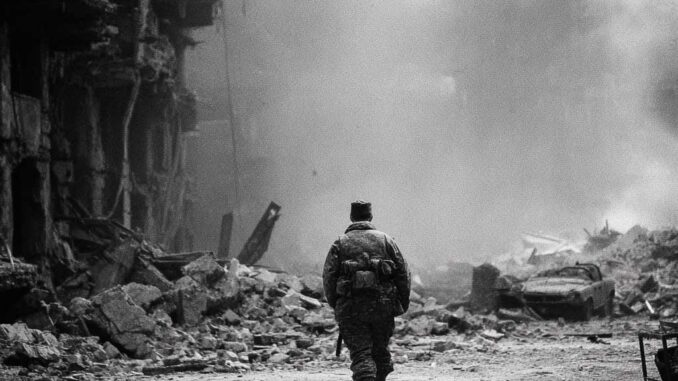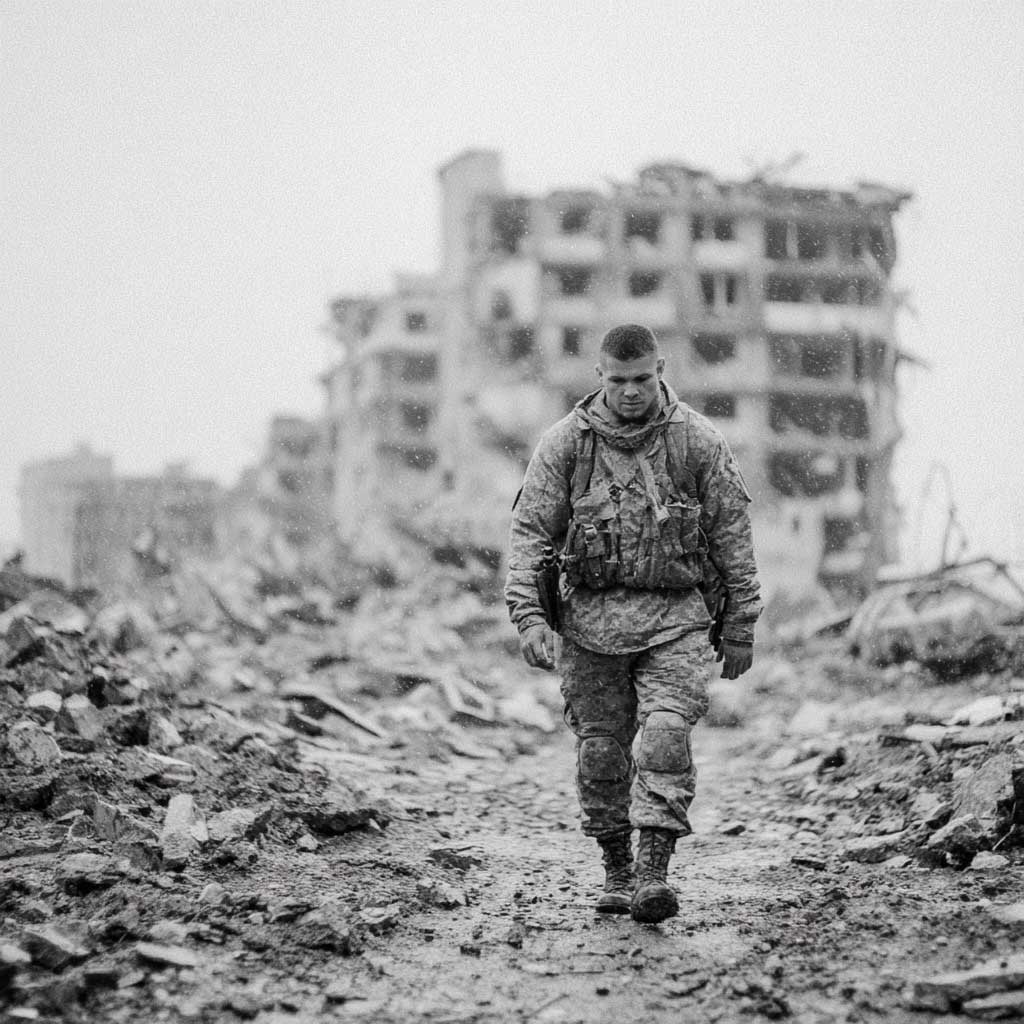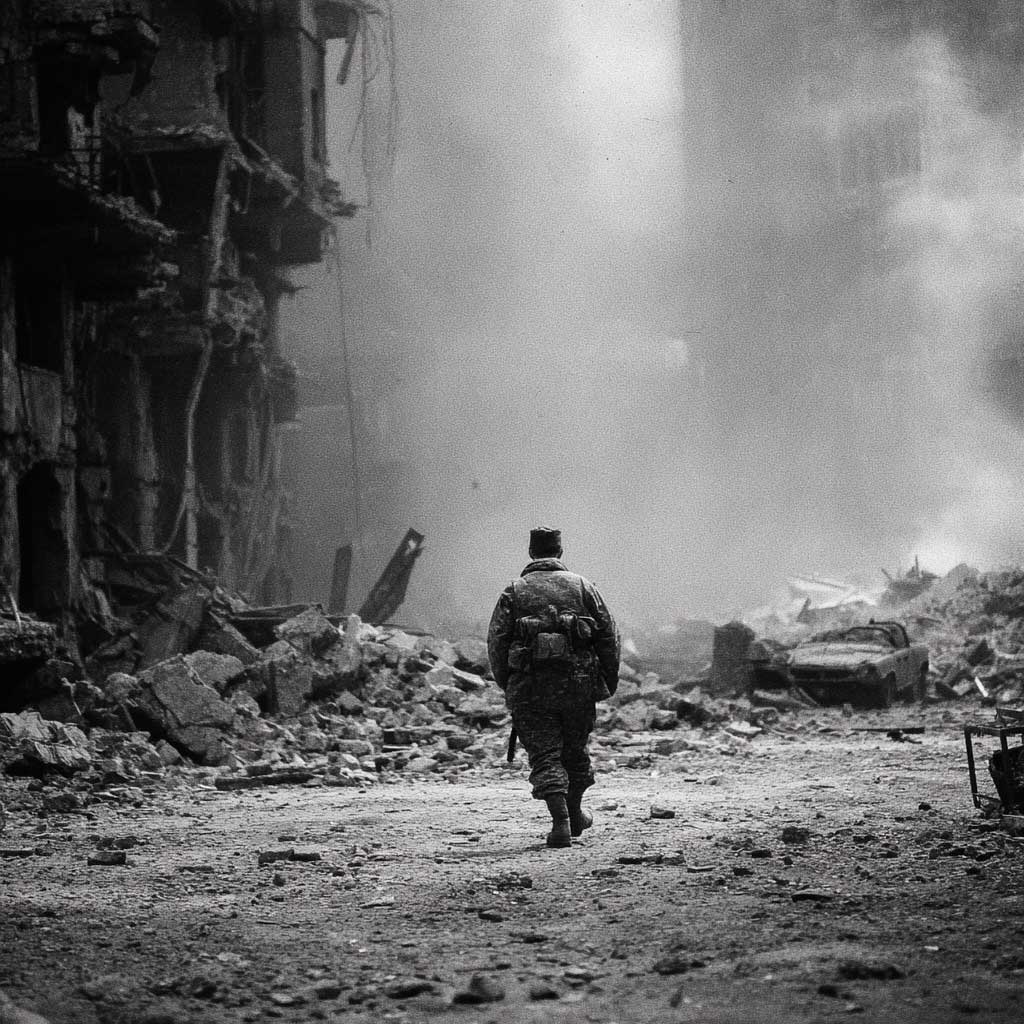
Russia intensifies strikes in Ukraine as Trump threatens Moscow. The conflict goes international with the arrival of North Korean troops.
Since early July 2025, the war in Ukraine has crossed a new threshold of violence. Russian forces are stepping up drone and missile strikes, targeting Kyiv, Kharkiv, and Odessa in particular. Air raid sirens sound daily, accompanied by major explosions. Residential buildings and critical infrastructure have been damaged, although Moscow claims to be targeting military targets exclusively. Kyiv denies any deliberate strikes on civilians and is stepping up its operations against Russian military installations.
Amid this climate of active warfare, the diplomatic dynamic between Donald Trump and Vladimir Putin has resurfaced with a bang. A recently published book claims that Trump threatened to “bomb Moscow” if Russia continued its invasion. This claim, although isolated, reopens questions about the US stance ahead of the November elections. According to European diplomatic sources, no concrete progress has been made in informal discussions between the two men. Putin is even said to have mocked the former president’s statements, describing them as improvised.
The escalation is also taking on an international dimension. North Korea is reportedly preparing to send 25,000 to 30,000 troops to support the Russian army, according to South Korean and Polish intelligence services. This development could transform the war in Ukraine into a wider confrontation, involving several sensitive geopolitical areas. The United States, divided between Republican isolationism and Democratic support, is creating strategic uncertainty that is worrying for Europeans.

A brutal intensification of Russian strikes on Ukrainian territory
Attacks concentrated on Kyiv, Kharkiv and the south
Since July 1, more than 80 Shahed drones and 45 cruise missiles have been launched by Russia against Ukraine, according to data from the Ukrainian army’s southern command. The attacks have targeted industrial and energy districts in Kyiv, the outskirts of Kharkiv, and the strategic port of Odessa. These strikes have killed at least 34 civilians in one week, according to the Ukrainian prosecutor general’s office, and caused power outages affecting more than 700,000 people.
The Ukrainian air defense system, reinforced by Western deliveries (Patriot, NASAMS, IRIS-T), intercepted nearly 60% of the airborne vectors, but the intensity of the salvos makes them more prone to saturation. Military analysts note a return to multiple nighttime strikes, combining kamikaze drones and short-range Iskander ballistic missiles, which complicates their simultaneous interception.
Military targets according to Kyiv
Faced with Russian accusations of retaliation, the Ukrainian military insists on the military nature of its own strikes, which mainly target ammunition depots, logistics airfields in Crimea, and command posts in the Belgorod region. Satellite images confirm the partial destruction of three Russian logistics sites, including an ammunition depot in the Voronezh region. Volodymyr Zelensky’s government maintains that no deliberate attacks on civilians have been ordered by its forces.
The war in Ukraine is therefore entering a phase of deep strikes on both sides, marking a turning point in the unspoken rules that previously limited attacks outside border areas. This development reflects the Kremlin’s desire to maintain military pressure ahead of diplomatic and electoral deadlines at the end of the year.
An unstable dynamic between Trump and Putin
The threat of bombing Moscow: posturing or deterrence?
According to the book Backchannel: Trump, Putin and the Shadow War, the former US president reportedly told advisers in private that he “would not hesitate to bomb Moscow” if the Russian offensive crossed certain red lines. Although these comments were never made publicly, they were immediately picked up in diplomatic circles as a sign of strategic ambiguity typical of Trump’s approach.
On the Russian side, the reactions were openly sarcastic. The Kremlin spokesman referred to a “locker room joke,” while Putin, according to the daily Kommersant, reportedly said in private that “Trump talks like a cartoon general.” This attitude underscores the tactical contempt with which Moscow seems to regard the former president’s verbal outbursts.
Limited impact on the diplomatic front
Despite the resumption of informal channels of discussion via unofficial advisers, no progress has been observed on sensitive issues such as a temporary ceasefire, humanitarian corridors, and the release of prisoners. The climate remains dominated by mistrust, especially after Trump’s trade sanctions against Germany and Poland in 2020, which left lasting scars on transatlantic alliances.
Underlying this, the war in Ukraine is increasingly seen as a domestic political lever in the US presidential campaign. Trump’s line remains unclear: reducing military commitments abroad, but maintaining aggressive rhetoric against Russia—an inconsistent position that complicates the strategic reading on the European side.
North Korean military reinforcements in the works
30,000 North Korean soldiers: logistics and strategic issues
Polish, South Korean, and British intelligence services have confirmed that Pyongyang plans to send 25,000 to 30,000 soldiers to support the Russian army, mainly in logistical and air defense roles. The first units are believed to be from the 5th Corps of the People’s Army, which specializes in positional warfare and fortified areas. This contingent could be deployed to the Russian rear lines in the Luhansk Oblast.
The cost of this operation would be borne by Moscow, with a counterpart of approximately €550 million in oil, grain, and industrial equipment, according to a report by the Defense Intelligence Agency (DIA). The agreement would also include the supply of 40 North Korean Hwasong-Chong medium-range anti-aircraft systems and the transfer of Russian ballistic technology.
A geopolitical extension of the conflict
North Korea’s involvement marks a geographical opening of the political front, transforming the war in Ukraine into a conflict with an Asian component. The United States, along with Japan and South Korea, have expressed concern about the regional security ramifications, particularly in the Sea of Japan. Washington could respond by deploying additional resources to Guam or the Yellow Sea.
Furthermore, the arrival of a foreign contingent could create logistical and linguistic instability on the Russian side. Operational compatibility between Russian and North Korean units remains uncertain, particularly in terms of tactical communication and rules of engagement. Coordination incidents could undermine the cohesion of Russian rear lines, which are already under strain from targeted Ukrainian strikes.

A strategic reshuffle in the absence of a clear US course of action
Europe forced to react
The intensification of Russian strikes, the strategic ambiguity of the United States, and the international spread of the conflict are putting Europe in a position of direct exposure. France, Germany, and the Baltic states have called an emergency meeting in Brussels to consider increased military support for Kyiv, including MALE drones, guided shells, and radar equipment. The European Union could also propose an advanced training program for 6,000 Ukrainian soldiers by the end of 2025.
In terms of budget, the EU is considering a special fund of €12 billion to secure supplies of 155 mm ammunition and military fuel. These measures aim to reduce dependence on the United States, while avoiding direct entry into the conflict. But they also reflect a belated realization of the limits of the US umbrella.
A structurally internationalized conflict
The year 2025 shows that the war in Ukraine can no longer be considered a strictly regional conflict. The involvement of North Korea, Iranian influence on drones, US hesitation, and tensions within NATO point to a conflict that has broken out, with no end in sight in the short term. Every month, new players join the fray, upsetting the initial balance and complicating any scenario for negotiation.
Europe, divided between strategic caution and the need to act, now finds itself with its back against the wall. The war in Ukraine is becoming a test not only for Ukrainian sovereignty, but also for the ability of Western democracies to define a coherent framework for action in the face of a widening conflict.
War Wings Daily is an independant magazine.